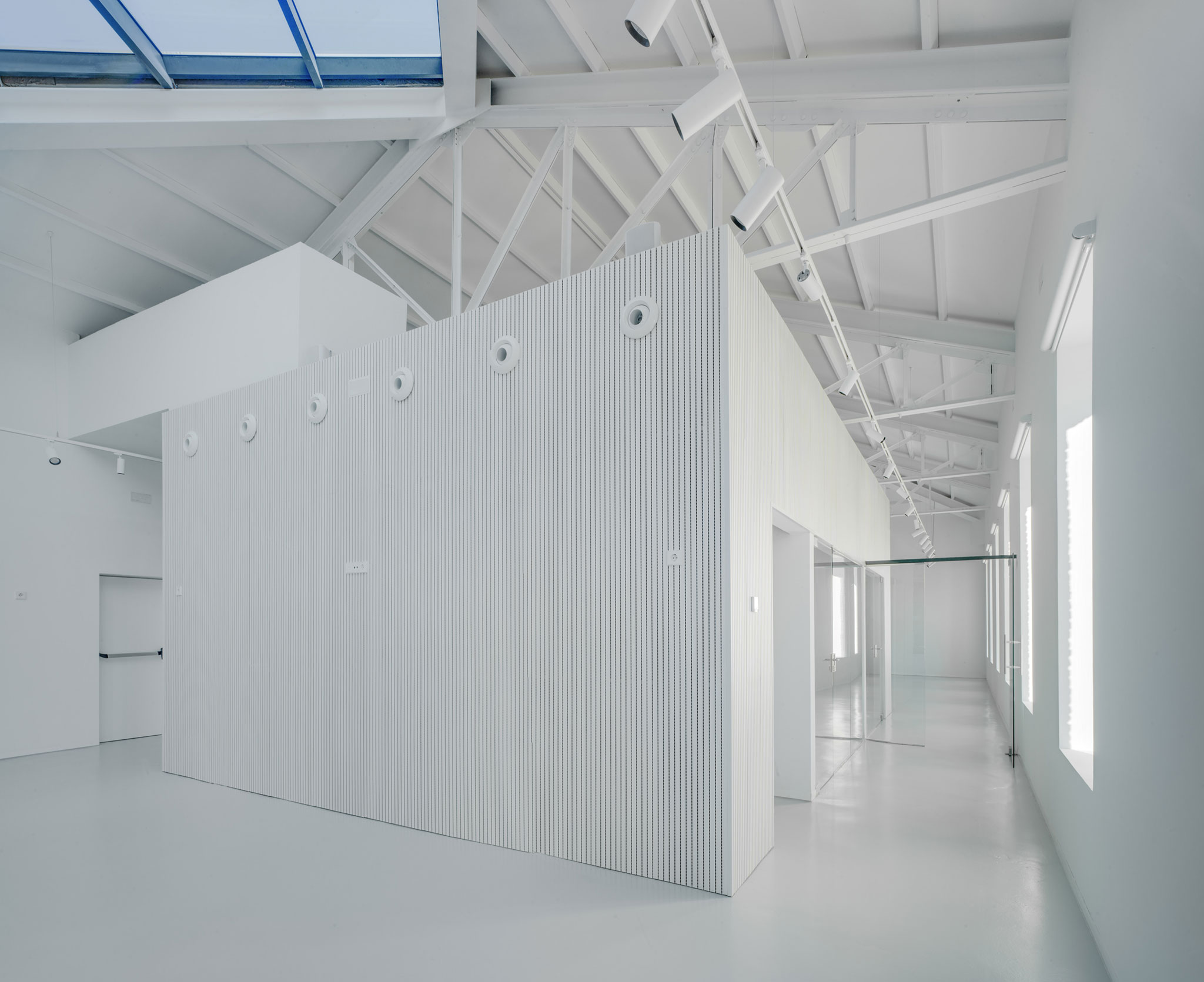The new socio-cultural centre seeks to recover the original image of the building, as well as its volumetry. The materials recovered from the perimeter walls form part of the pavement of the new public spaces, on which their original traces will be marked.
The two construction phases support the idea of independent buildings, a third access is also created, enhancing the openness and flexibility of the complex.
Phase 1, now completed, corresponds to the rehabilitation of the main building, inside which the open spaces and the colour white become the protagonists. These new spaces will house a program of diverse uses, such as the showroom-shop, the multi-purpose function room, the area dedicated to offices and the restaurant-cafeteria.

Muros etéreos by IH arquitectos. Photograph by David Frutos.

Muros etéreos by IH arquitectos. Photograph by David Frutos.

Muros etéreos by IH arquitectos. Photograph by David Frutos.
Description of project by IH architects
Inaugurated in 1929, the provincial prison of Murcia came to be occupied by more than 3,000 prisoners, being a centre prepared for 400. Due to the opening of the new Sangonera prison, the building ceased its activity in 1981.
Located in a block in the centre of the city, the eclectic-style complex is divided into two main areas, Administration and Internal, distributed in 3 buildings separated by patios.
A double perimeter wall with watchtowers in the corners closes off the inmates' area, generating a corridor and a series of patios linked to the modules.
As a listed building, the conservation of the complex is mandatory. The spatial and supporting structure of the interior must be preserved. Any action on the facades should tend to recover the original image, as well as its volumetry.
La Cárcel, the popular designation of the building, is compressed in the urban environment generated by the very nature of closure and exclusion of the complex, which generates narrow perimeter sidewalks and redundant traffic that does not invite the citizen.
The objective of the proposal is to open the building to the city: urban integration, permeability and accessibility as elements to recover public space. The perimeter stone walls that isolated the complex are turned over to form the new pavement. They leave a trace in the form of metal latticework, a permeable space, favouring pedestrian flow without losing the existing original tension.
The new Socio-Cultural Center now surrounded by new squares linked to the city is an operation of respect for the existing architecture, historical memory and the environment.
Conceived for independent use, the main access building (Phase 1) is proposed as a new point of reference in the city. The newly landscaped squares act as a lobby for the building that will house uses such as Showroom-shop, Assembly Hall-multiple uses Offices and Restaurant-cafeteria.
A sustainable architecture, in conceptual, contextual and energetic terms, but also in the social term. Reuse of existing materials, energy efficiency and flexibility and versatility of operation of the centre as a whole, solutions proposed in favour of efficient, sustainable and economically viable operation.



















































































